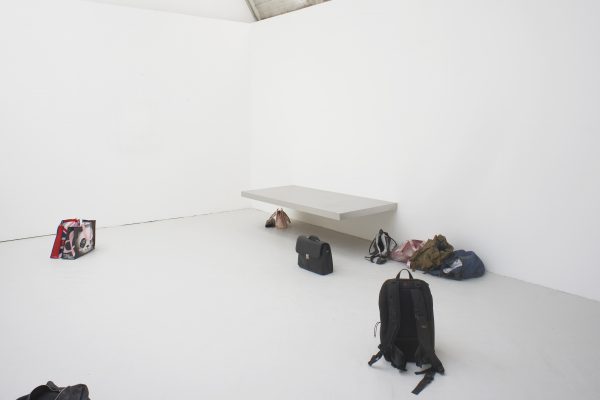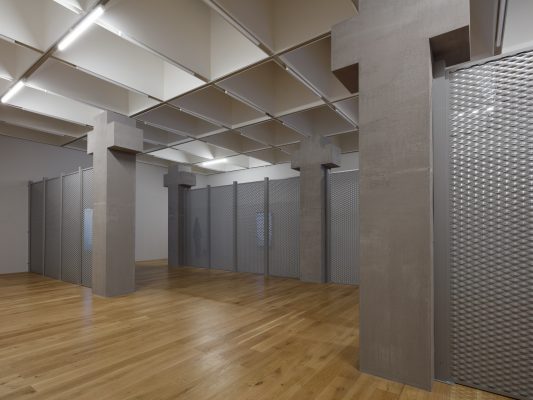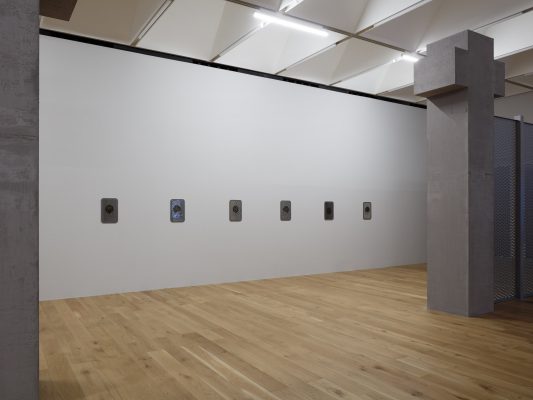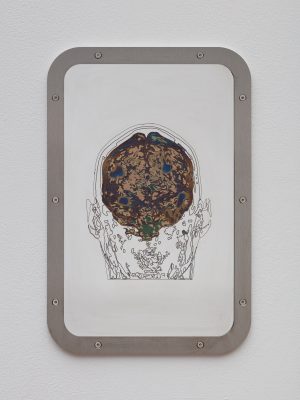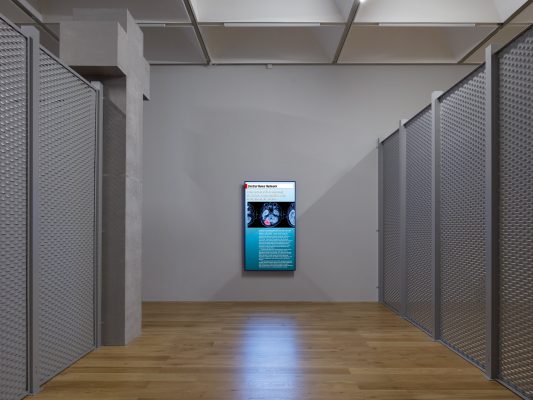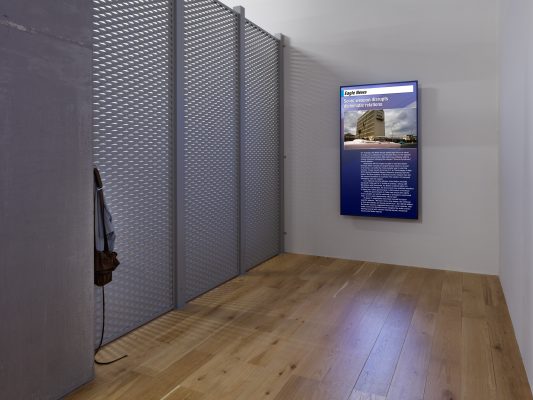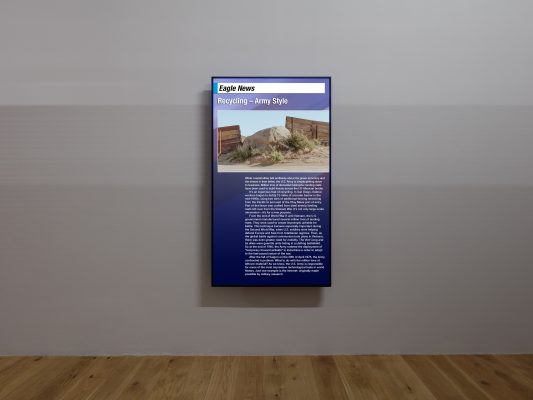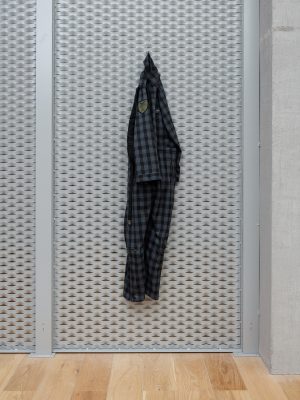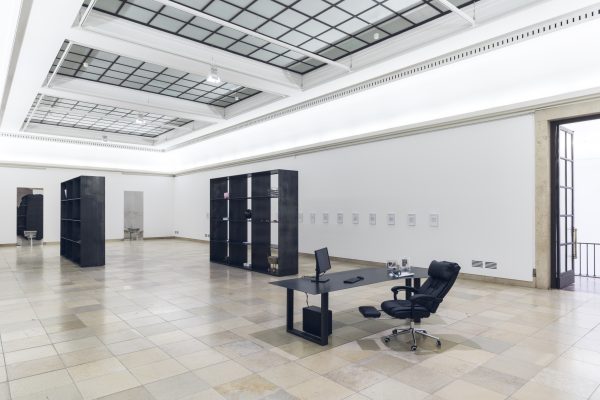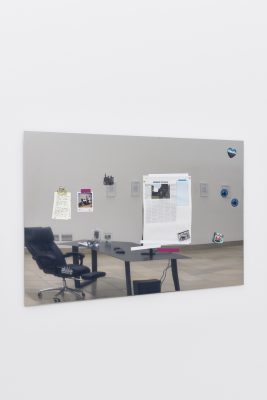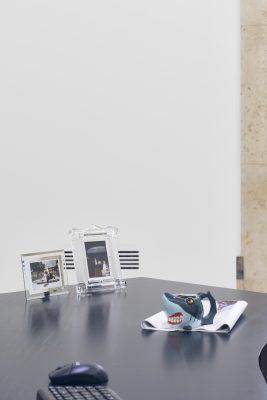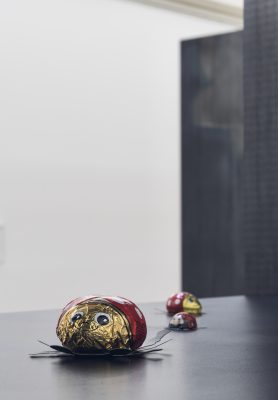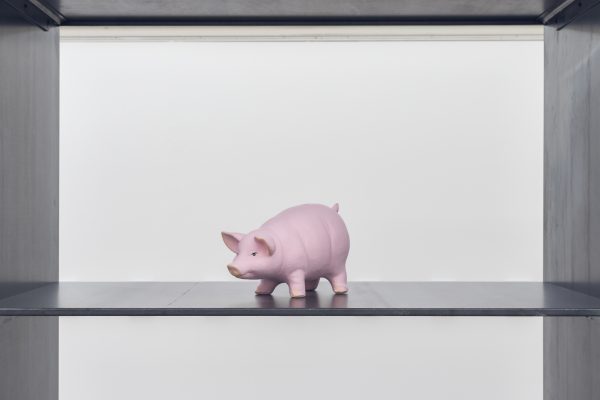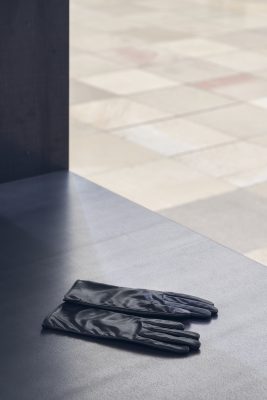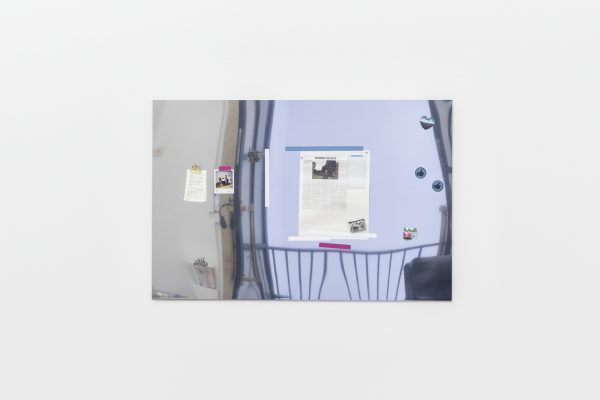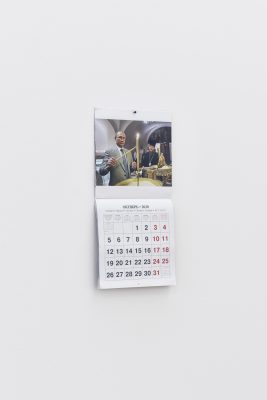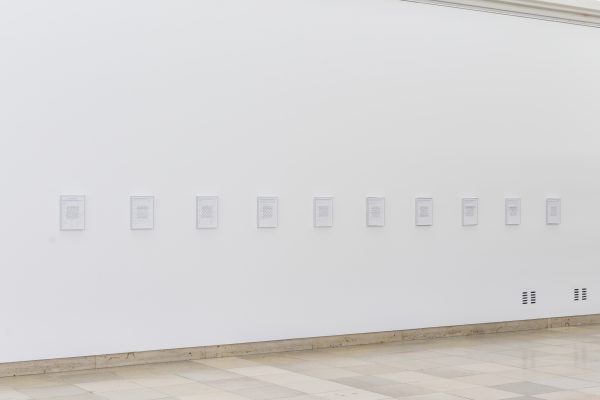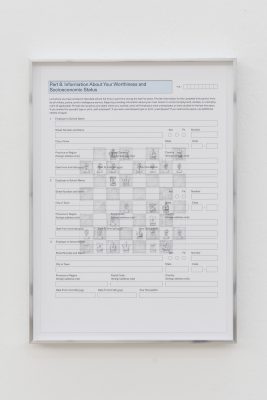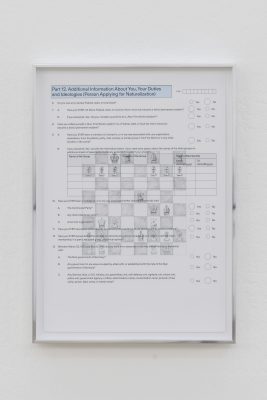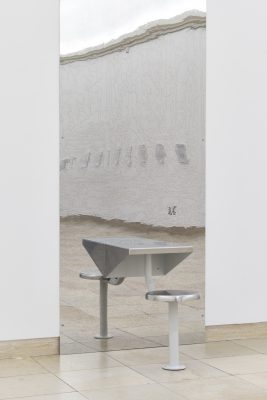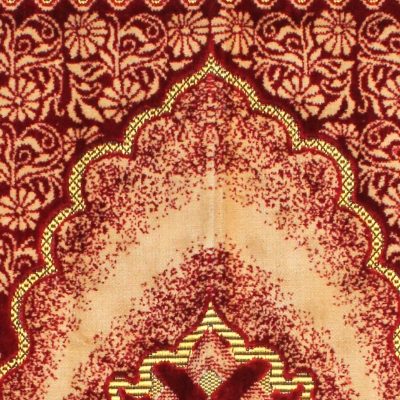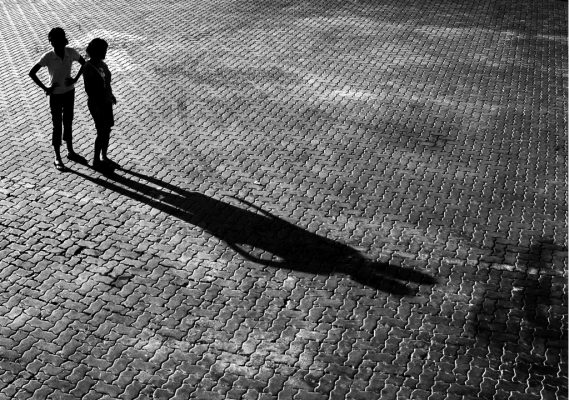Sung Tieu translates from Vietnamese to English as ‘pistol’. It’s an apt name for an artist whose practice explores the psychological dimension of warfare, surveillance and incarceration. Born in Vietnam, and raised in Berlin, Tieu’s early projects were inspired by the US army’s weaponisation of the dead during the Vietnam War; in the 1960s, US intelligence recorded an actor feigning a Vietnamese soldier crying for his loved ones from beyond the grave. Soldiers broadcasted ‘Ghost Tape 10’ from helicopters circling Saigon with fluorescent beams steeped in navy blue twilight. The aim was to induce disquiet, tapping into the Vietnamese belief that dark souls should be buried close to their ancestors to avoid becoming trapped in purgatory, like a phantom army relentlessly gliding the Earth. In Song For Unattended Items (2018) at London’s Royal Academy, Tieu played similar, sinister sounds from speakers inside discarded backpacks, revivifying the acoustic ammunition’s horripilating chill.
Her concurrent solo exhibitions In Cold Print (2020) at Nottingham Contemporary and Zugzwang (2020) at Haus der Kunst in Munich synthesise terror through sadistic, minimalist installations. Both environments are demarcated sparsely by chain-like, gun-metal grey fences, mirrored surfaces and prison furniture sliced from stainless steel. In Nottingham, visitors enter a metallic vault (gesturing to minimalism’s spatial ideal, the void) lined with platinum panels bolted to the wall. A muffled, droning noise plays on continuous loop, interspersed with distorted cricket-like chirps.
This sound piece, entitled In Cold Print (all works 2020 unless otherwise stated), is a recording of another sonic weapon. In collaboration with neuroscientists at Nottingham Trent University, Tieu has exposed herself to a reconstruction of the so-called ‘Havana Syndrome’. In 2016, US embassy staff posted in Cuba reported an outbreak of unexplained neurological injuries, believed to have been caused by an aural frequency attack. These were strange incidents: victims heard inexplicable noises and had difficulty explaining their physical symptoms, described as ‘standing in an invisible beam of energy’.[1] Rumours emerged – supported by that dystopian harlequin Donald Trump – claiming the Cuban government had detonated mysterious artillery. US intelligence recorded various high-pitched noises, documented as a kind of chirping, and used these to prove a weapon’s existence. Tieu played the tapes – which scientists described as an aural hammer silently hitting you – and monitored her neurological activity via MRI. The brain scans, titled Exposure to Havana Syndrome, Self Portrait, seem to melt onto each steel surface in the gallery; cerebral damage appears like shimmers of dark matter, nerves are flushed with violet, gold and bronze hues. Tieu risked her health for this experiment and, thankfully, emerged unscathed, suggesting the event could be a politically motivated spectre.
Violence and protest coil around these works like the crystal blue nucleotides of a double helix. Tieu’s approach to simulating threat recalls Nathalie Olah’s needling book Steal As Much as You Can (2019), where she contemplates the militancy of liberal ‘taste’. Art that culture professionals deem to be beautiful and progressive often appears absolute, she argues, but in reality it is ‘judged by [its] proximity’ to the overwhelmingly white, middle-class establishment.[2] ‘Good taste’ has become a proxy for luxury. Olah posits a return to harshness – an artistic snaring of the grotesque metaphor in Ancient Greek tragedies, Shakespeare’s plays and Victorian gothic novels – to rejuvenate radical commentaries. I see this posture, or tensity, pervading Tieu’s exhibitions. For Olah, villainous illustrations are the silver bullet: an antidote to liberal art’s depoliticisation.
Ghoulish appetites for bloodlust will not be whetted. Tieu’s self-annihilating musings recall Maggie Nelson in The Art of Cruelty (2011), where she distinguishes between what it means ‘to get intimate with discomfort’ and gratuitous, gruesome spectacle. ‘By wading in the [moral] swamp’, Nelson argues, art can simulate violence graded with nuance.[3] I am unsurprised to learn, for instance, that Tieu is inspired by the late Mike Kelley: an artist who understood architectural setting and perverse fantasy to be the magic wand of vexation. His plexiglass sculpture of the suburban American classroom – Educational Complex (1995) – exuded the horror of the high-profile school shootings and child-abuse cases of the era without a single drop of blood (or ketchup). I sense Kelley’s wraith most luridly in Nottingham, lurking among the towering, concrete crucifixes melded to the fences that divide the gallery. Their inclusion mirrors a distinctly Kelley-ian form of holy debasement: conjuring gory images of the Passion where Christ’s suffering is alchemised into Divinity… within a zone like a gilded laboratory. They disorientate you among the demonic sterility of Tieu’s cool hellscape.
At Haus der Kunst Tieu appears in single combat with contemporary migration policy. For the installation Zugzwang she has penned an auto-fictitious narrative about a bureaucrat named ‘Mr Stevens’ who executes European border control. Visitors enter his study (or maybe his bunker or cell): there’s a desktop computer, a revolving armchair and large black shelves. He owns a baby pink piggy bank, a Russian calendar – where Vladimir Putin is pictured dopily lighting an Eastern Orthodox candle – and liquorice leather gloves. A newspaper clipping, glossy heart-shaped stickers and a polaroid are pinned to his notice board. The photograph depicts a young Tieu perched on a German ‘POLIZEI’ motorbike. Is Mr Stevens her daddy?
The cut-out interview with Mr Stevens affixed to the metal board – Manning the Deck – mentions his ‘strong national pride’ that is being frowned upon in more ‘cosmopolitan’ centres. He loves Richard Wagner, whose fairytale instrumentals emanate from hidden speakers, and comprise Tieu’s sonic sigil for grotesquerie (a sound piece titled Zugzwang). Through a subtle remilitarisation of Fascist aesthetics (Wagner was also Hitler’s most played), Tieu sharpens the misanthropy latent in our present asylum administration. She also references her own memories of displacement. Behind the prison stools of Monologue 1 – 3, lasers have engraved chrome sheets to create a terrain of noxious dripping flames. They evoke the vespertine forest between the Czech Republic and Germany, which Tieu and her family safely crossed in 1992.
To flow the adrenaline in your veins: imagine that one of Fyodor Doystoevsky’s government clerks – those fomenters of silent evil in The Double (1866) – began implementing post-Brexit immigration technology. Instead of a painting, they have framed thirty-one official asylum, registration and naturalisation application forms on the office wall. These documents cannot be assigned to a particular country. But the kinds of ominous questions they ask – have you ever been a member of a terrorist organisation? Spent time in a detention facility? Confined to a mental institution? Are you a prostitute? A drunkard? – reflect real examples. Collectively titled Alekhine’s Defence, this work shows, jarringly, how disparate aspects of a refugee’s life can have devastating consequences when seeking protection. A delicately pencilled chess match (in thirty-one moves) also appears over each page, allegorically reducing the process to a game of mathematical conflict. In a duel against the Nation State’s dark knights, it seems, the alien is always the loser.
[1] Adam Entous and John Lee Adamson, ‘The Mystery of the Havana Syndrome’, The New Yorker, November 2018.
[2] Nathalie Olah, Steal as Much as You Can: How to Win the Culture Wars in the Age of Austerity, 2019, p.189.
[3] Maggie Nelson, The Art of Cruelty, 2011, p.13.
